Expansions to the Android: Netrunner LCG come primarily in two forms: deluxe expansions and data packs. So far, the deluxe expansions have been focused primarily on one corporation and one runner faction. The data packs are part of the LCG model. Expansions are released in cycles, with each cycle having a distinct name and being comprised of 6 data packs. Each data pack had 3 copies of 20 cards (except for the Mumbad cycle, where each pack has 18 cards with 3 copies, and 1 card with 6 copies,) for a total of 60 cards per pack. Multiply that by 6, and you have 120 unique cards per cycle, or 360 cards per cycle. I intend to analyze every single card released so far, but with rotation coming up, the first two cycles are about to become irrelevant, so it is important to start with them.
So for the first actual expansion, we have What Lies Ahead in the Genesis cycle. This pack immediately start expanding on the themes presented out of the core.
Whizzard: Master Gamer
The first new runner identity is a new Anarch. As such, Whizzard is practically the same as Noise, but the ability is different. Instead of trashing the top card of the R&D every time a virus is installed, he has 3 recurring credits that can be used to trash cards. This is a really powerful ability. Many decks are dependent on assets and upgrades, and so Whizzard can take those out without having to spend as much from his own credit pool. Add in the fact that there are now operations and ice with trash costs, and you can see how free money every turn can quickly add up. This ability is probably why Whizzard has been rather popular, to the point where the World Championship for 2016 was won by a person playing a Whizzard deck. The ability itself does not have specific synergy, but instead provides versatility, allowing you to arrange your deck in whatever way you want.
Trivia: The text on Whizzard's shirt come from Zork, an early text-based adventure game for computers. If you entered a dark area without a source of light, the game would inform you, "It is pitch black. You are likely to be eaten by a grue." Remaining in the area or pushing forward without a light would result in a game end state, where you were eaten by a grue.
Pair cards: anything, really.
Spinal Modem
Not exactly a console that has seen much play outside of draft games. For 4 credits, you get 1 extra point of memory and 2 recurring credits that can pay for using icebreakers. I suppose this could be considered a condensed version of Cyberfeeder, although there is a potential drawback. If the corporation successfully traces you during a run, you take 1 brain damage. Now, there are a few ways to prevent brain damage, but it might be better off avoiding it at all costs. Still, the goal here is to come up with ways to make this good.
Pair cards: Access to Globalsec, Inside Man, Feedback Filter Trade-In, Ramujan-Reliant 550 BMI
Imp
This is a really good card. Alone, it allows you to trash 2 cards at no cost. So you could use this to take down something that would be expensive, such as a SanSan City Grid. But, it also allows you to trash a card that normally could not be trashed. So say you hit a piece of ice in their hand. You could use a counter to get rid of it, meaning that your next run on HQ has a better chance of resulting in getting something good. Or you could pick of a critical operation they have, such as SEA Source, Scorched Earth, or Hedge Fund. The downside is once all the counters are gone, this will take up space. But there are ways to replenish those counters.
Pair cards: Grimoire, Djinn, Aesop's Pawnshop, Hivemind, Incubator, Virus Breeding Ground, Uninstall
Morning Star
The third of the fixed strength icebreakers, along with Mimic and Yog.0. For just 1 credit, you can break any number of barrier subroutines. Normally, a large number of subroutines on a piece of ice means that it will be expensive to break, but this just smashes right through that. The downsides are the high install cost and the 2 memory requirement. Still, if you want to put the work in, this can deal with most barrier cards cheaply.
Pair cards: Datasucker, The Personal Touch, Dinosaurus, Retrieval Run, Şifr
Cortez Chip
This does not seem great at first, but there are applications. If you can expose a specific piece of ice, you could use this to make it so the corporation cannot rez that piece of ice, or make them questions whether they should spend so much to do so. There is also another application. Because this card has an install cost of 0, it can be used to protect other cards in the event that the corporation uses Power Shutdown. That does not happen frequently without being setup for a combo, but I have seen it happen, and it can disrupt plans, so if you need to protect other 0 cost programs or hardware and are already Criminal, this might not be a bad card to put in your deck.
Pair cards: Forged Activation Orders, Social Engineering
Peacock
This seems to mark a trend in how criminal icebreakers operate. There is the potential to deal with high strength ice, but it requires the investment of a lot of credits. Ninja gained 5 strength for 3 credits. Femme Fatale cost 2 credits to gain 1 strength. Peacock is sort of bad in both directions. It costs 2 to raise its strength by 3, and it costs 2 credits to break a single subroutine. The major benefits are the low cost, and it being in faction for Criminals, so if you did not leave enough influence for another decoder, this could possibly work as long as you can make enough money to use it.
Pair cards: Cyberfeeder, Datasucker, e3 Feedback Implants, Multithreader
ZU.13 Key Master
I mentioned before cloud breakers, and this is the first example thereof. This is a very cheap and efficient decoder, which could take up no memory. The biggest drawback is that it becomes expensive to deal with high strength code gates, especially if there are multiple code gates in a row on a server. Although, there is a way to deal with that now.
Trivia: I know, this seems to be an obvious reference to Ghostbusters. But the reference is somewhat off. If you will recall, Zuul was the gate keeper, where Vinz Clortho was the key master. Still, that does not stop most people, myself included, from calling this card Zuul.
Pair cards: Rabbit Hole, Access to Globalsec, Security Chip
The Helpful AI
Not a card that is commonly seen. It might be because it is unique, so only one copy can be in play at a time. Still, it does add 1 link strength, and can be used to give a slight boost to an icebreaker for a turn. That can save you some cash on a future run, so it might be worth the cost of installing this card.
Pair cards: Mimic, Yog.0, Morning Star, Hostage
Plascrete Carapace
This card exists primarily as a hard counter to Scorched Earth, as this came out immediately after the core set. Of course, there are now other cards that do meat damage, but this card can shut down a tag and bag deck if they are unable to deal with it. Still, if the corp is not going in that direction, then this card becomes much less useful, except maybe if your deck is setup to deal meat damage to yourself.
Trivia: There is not a card in the Netrunner CCG that matches this exactly, although Armored Fridge is probably the predecessor. Said fridge has the same install cost, except it comes with 7 counters instead of 4.
Pair cards: Aesop's Pawnshop, Inside Man, Tri-maf Contact, Uninstall
Haas-Bioroid: Stronger Together
And now the first new Haas-Bioroid identity. Comparing this directly to Engineering the Future, this seems to be weaker. Not gaining that extra credit every turn can make it harder on your economy. Also, when this first came out, there were not many pieces of bioroid ice. Now, there are a wider variety of bioroids, and there are more cards which provide synergy with bioroids, so this is somewhat more viable.
Pair cards: bioroid ice, Bioroid Efficiency Research, Project Wotan, Brain-Taping Warehouse
Mandatory Upgrades
When this card was released, it had the highest advancement requirement of any agenda. Needing 6 advancement tokens means it will likely take 2 or 3 turns to score this. Of course, the ability is the main reason for that. Having an additional click on your turn means you could install and score a 3 for 2 agenda without the need for a Biotic Labor. Or you could play a card after using Melange Mining Corp.. Even if you only score one of these, it gives the corporation a significant advantage over the runner. Of course, now you may not even need to try and score one.
Trivia: Yet another reprint, of sorts. The original card from Netrunner CCG was called Subsidiary Branch, and was practically the same, except it was only worth 1 agenda point.
Pair cards: Media Blitz
Janus 1.0
Very expensive, but with good reason. This card can potentially do 4 brain damage, and may even result in a flatline. Sure, each subroutine can be broken at the cost of a click, but with only 4 clicks to start, a runner who runs into this on their first click is going to take a brain damage. And even if they do have an icebreaker that can break this, it will probably be expensive to do so.
Trivia: Janus is the Roman god of beginnings, gates, transitions, time, doorways, passages, and endings. He is usually depicted as having two face.
Pair cards: Bioroid Efficiency Research, Project Wotan, Tyr's Hand, Brain-Taping Warehouse
Ash 2X3ZB9CY
This is highly useful. For just 2 credits, you can make it so the runner is unable to access any other cards. You will have to make a successful trace for that, but it could open a scoring window, or prevent the runner from stealing agendas out of HQ or R&D. The moderate trash cost combined with the ability means that this is likely to be destroyed when the runner accesses it. But that means the runner is spending more money, which could stop them from making another run immediately.
Pair cards: Primary Transmission Dish, Breaker Bay Grid
Braintrust
Jinteki's first 3 for 2 agenda. That feature alone makes this card decent, although if you are willing to invest some more time and credits into it, you can get a discount on the rez cost of all ice. While not many people use Braintrust for that purpose, it is something to be aware of, as spending fewer credits rezzing ice means you will have more credits for other options.
Pair cards: Biotic Labor, Trick of Light, Mushin No Shin
Snowflake
And this introduces the Psi archetype. While the Netrunner CCG utilized dice rolls for random results, this is more dependent on both the players. Both players choose to secretly spend either 0, 1 or 2 credits. If the amount spent by each player is different, there is generally a detrimental effect to the runner. In this case, a simple end the run effect. Of course, that makes this ice not nearly as solid as other barriers, but it is cheap to rez and may force the runner to spend some credits instead of taking the risk that you might outguess them.
Trivia: Almost a reprint. From the Netrunner CCG, we have Too Many Doors, which has the same rez cost, strength, and a subroutine that is practically the same as Snowflake. The only difference is Too Many Doors is a sentry instead of a wall.
Pair cards: Nisei Division: The Next Generation, Hyoubu Research Facility
Restructured Datapool
While this may seem like a poor ability, it is actually somewhat useful. Scoring this allows you to spend clicks to potentially give the runner tags. Of course, this works best if you use Closed Accounts on the runner first, and they have less than 2 link strength. If you can pull that off, you could pile up tags onto the runner, which could then be used for a variety of purposes.
Trivia: Because tracing worked in a very different way in the Netrunner CCG, it is not exactly fair to make a direct comparison between trace cards. That said, this card bears some similarity to Netwatch Operations Office, which has the same advancement requirement and the same ability, but was worth 2 agenda points instead of 3.
Pair cards: Psychographics, Lily Lockwell, Resistor, Keegan Lane
TMI
A low cost ice with high strength means there is a drawback. When you rez this, you are forced to make a trace, and if that trace fails, you have to derez this. Of course, if you have the money, you could just rez it again, but then you have to make that trace again. Still, if you can get that trace off, you now have a fairly strong barrier in play that could be expensive for the runner to deal with.
Trivia: TMI is internet shorthand meaning "too much information." Perhaps in this case, the corporation is bombarding the runner with junk information.
Pair cards: NBN: Making News, Primary Transmission Dish
Project Atlas
Remarkably useful in many ways. It is a 3 for 2 agenda, and could be used for a fast score, but its true power comes with over advancing it. Each advancement counter on it over 3 gives you an agenda counter, which can be spent to search the deck for any card and add it to your hand. Of course, you do have to reveal that card to the runner, but you could immediately use that card, or take something out of the deck if they make a run on R&D with multiple accesses.
Pair cards: Biotic Labor, Titan Transnational: Investing In Your Future
Caduceus
A cheap sentry that could potentially end the run. Of course, that is dependent on a successful trace. No, what you will most likely get out of this card is the runner deciding to ignore the first subroutine, potentially granting you 3 credits. So the first time the runner encounters this, it could reimburse you the cost of rezzing it, meaning any future encounters with this could be pure profit. Of course, if the runner is going with high link strength, this quickly becomes a very poor piece of ice.
Trivia: The caduceus is the staff carried by Hermes Trismegistus. In Roman iconography, it was carried by Mercury, the messenger of the gods, guide of the dead, and protector of merchants, shepherds, gamblers, liars and thieves. It was recognized as a symbol of commerce and negotiation.
Pair cards: Primary Transmission Dish, Improved Tracers
Dracō
This starts out seeming cheap, but you can increase its strength when you rez it. Each extra credit you spend on this when rezzed boosts its strength by 1. That could make it expensive for some icebreakers to deal with. Of course, it also has another downside. The one subroutine requires a trace, which starts at a low strength. A successful trace will not only end the run but also give the runner a tag. So either the runner will break this one subroutine, or think they can beat the trace, whichever option is less expensive.
Pair cards: Primary Transmission Dish, Improved Tracers
And that is all from What Lies Ahead. Next time, we take a look at Trace Amounts.
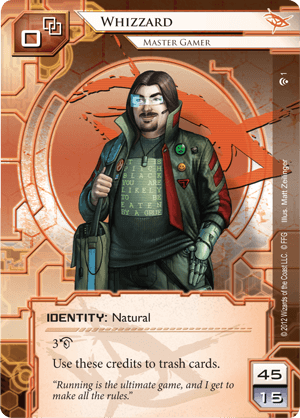
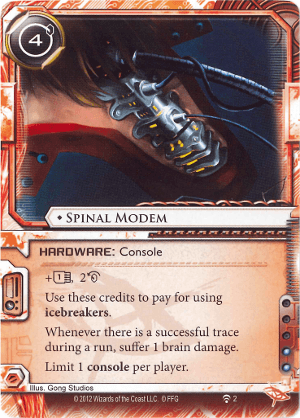

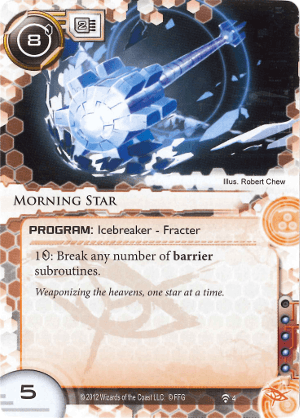
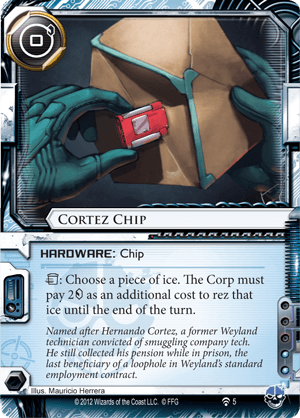
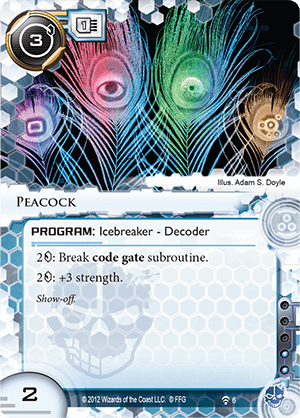
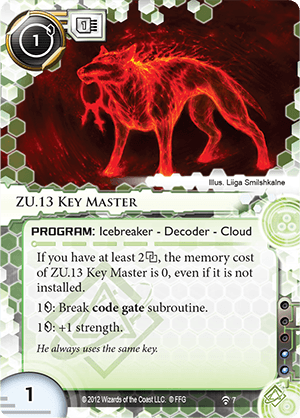
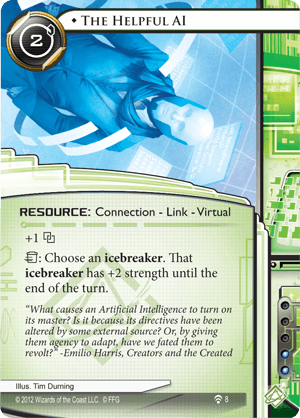
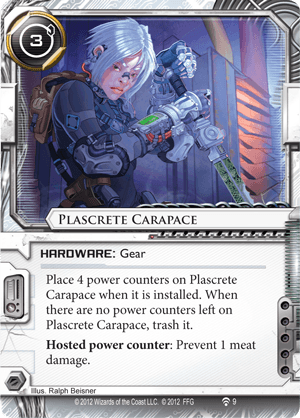
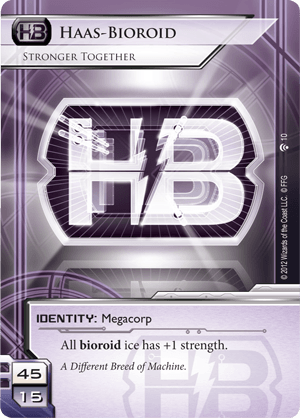
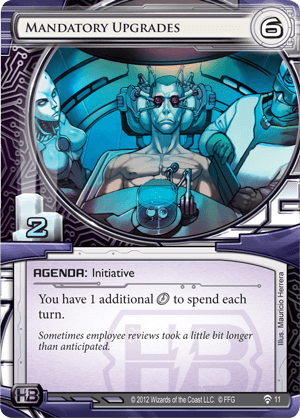
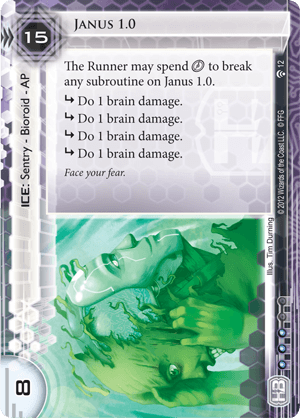
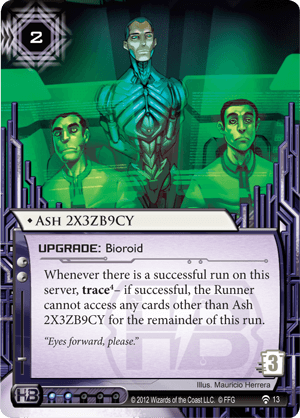
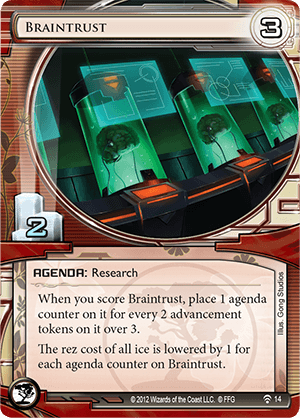
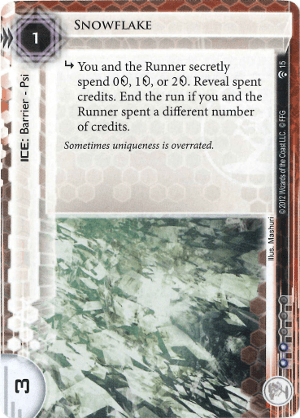
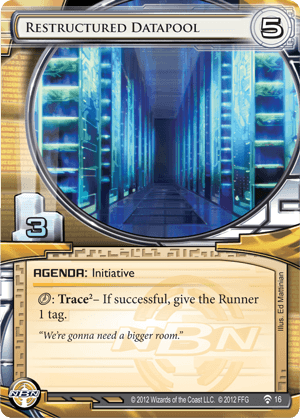
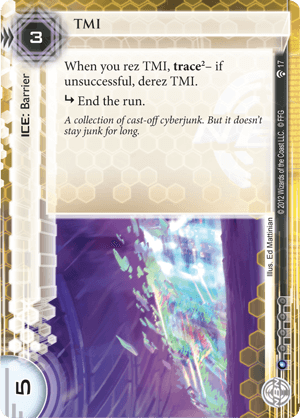
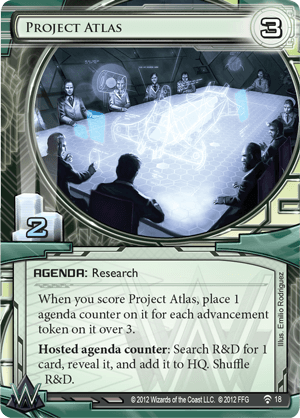
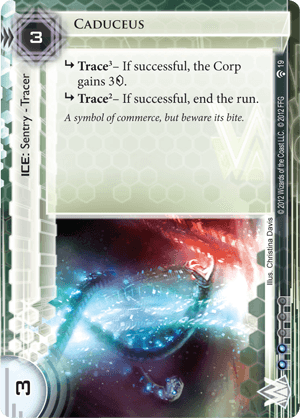
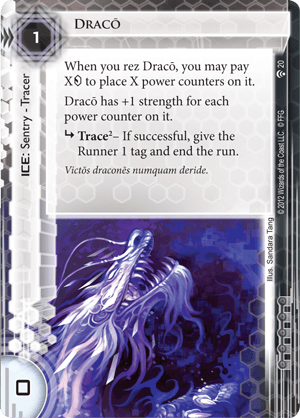
No comments:
Post a Comment